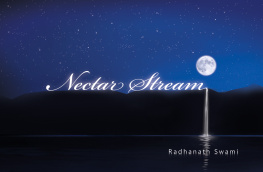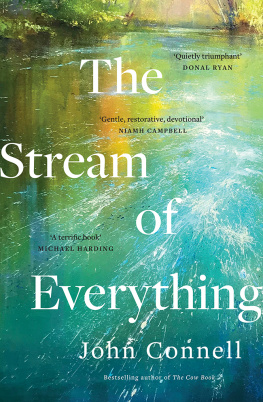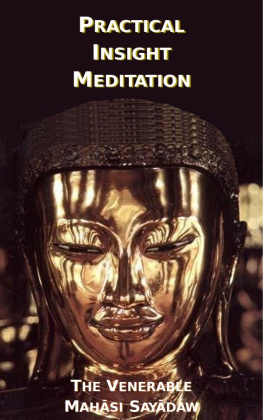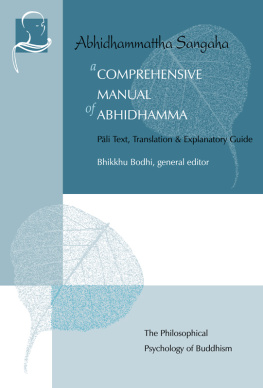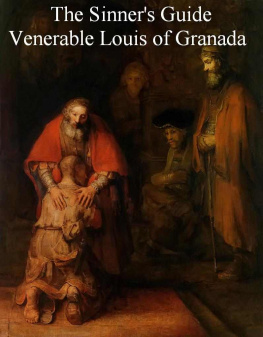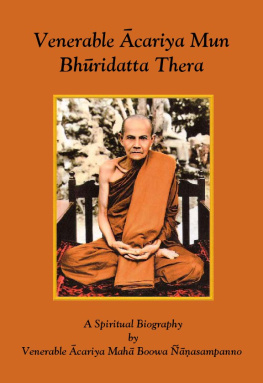Venerable Acariya Thoon Khippapañño - Beyond the Stream of the World
Here you can read online Venerable Acariya Thoon Khippapañño - Beyond the Stream of the World full text of the book (entire story) in english for free. Download pdf and epub, get meaning, cover and reviews about this ebook. year: 1989, genre: Religion. Description of the work, (preface) as well as reviews are available. Best literature library LitArk.com created for fans of good reading and offers a wide selection of genres:
Romance novel
Science fiction
Adventure
Detective
Science
History
Home and family
Prose
Art
Politics
Computer
Non-fiction
Religion
Business
Children
Humor
Choose a favorite category and find really read worthwhile books. Enjoy immersion in the world of imagination, feel the emotions of the characters or learn something new for yourself, make an fascinating discovery.
- Book:Beyond the Stream of the World
- Author:
- Genre:
- Year:1989
- Rating:4 / 5
- Favourites:Add to favourites
- Your mark:
- 80
- 1
- 2
- 3
- 4
- 5
Beyond the Stream of the World: summary, description and annotation
We offer to read an annotation, description, summary or preface (depends on what the author of the book "Beyond the Stream of the World" wrote himself). If you haven't found the necessary information about the book — write in the comments, we will try to find it.
Beyond the Stream of the World — read online for free the complete book (whole text) full work
Below is the text of the book, divided by pages. System saving the place of the last page read, allows you to conveniently read the book "Beyond the Stream of the World" online for free, without having to search again every time where you left off. Put a bookmark, and you can go to the page where you finished reading at any time.
Font size:
Interval:
Bookmark:
Often when there iswidespread interest in subject, there are also widespreadmisunderstandings. This is certainly true of the current interest inBuddhist meditation. Many different - and sometimes contradictory -methods of meditation are presently available, and the beginningmeditator often finds it difficult to know which methods are partialor lopsided when viewed in terms of the Buddhas path, and whichare balance and complete.
The purpose of this bookis to give the reader enough background in the factors of theBuddhas path to make an informed choice in deciding which methodof meditation to pursue. It emphasizes Right View - the first factorof the path - as having crucial importance, for without thedevelopment of Right View through reasoned investigation of physicaland mental processes, no amount of concentration or mindfulness, bareawareness or going with the flow can lead to absolutefreedom form suffering.
Included is an appendix,which suggests a number of beginning techniques in walking andsitting meditation for use in conjunction with the approaches fordeveloping Right View, discussed in the body of the book.
The author, abbot of aforest monastery in northeastern Thailand, has written several Dhammabooks, and is frequently invited to Bangkok to teach.
Bangkok
July, 1989
I would like to start outby making one point. You may have read many Dhamma books and heardDhamma from many teachers. Each teacher has a different mode ofexpression. You must contemplate, analyze and investigate criticallyand reasonably what you have read with wisdom (pa) until youare sure of it. Your contemplation must be based on Right View(sammaditthi), which is the important principle to guarantee thecorrect practice. It is like computer programming. A wrong computerprogram will produce a wrong output and wrong results regardless ofwhat you put in. if the mind is programmed with wrong views(micchaditthi), misunderstanding is hidden in the mind, andsubsequent reasonings are all wrong. So improper use of wisdom maylead to wrong understanding, and the true Dhamma becomes false inones mind.
The practice on minddevelopment is a very delicate process. It involves all-roundknowledge to avoid possible misunderstandings. It is not the casethat all the realizations, which arise in the course of the practice,are true, because these realizations can arise from two differentsources: Right View and Wrong View. The two lead to completelydifferent ends. The knowledge gained from right views teaches themind and raises it to a higher level of Dhamma practice in line withthe Noble Path (Magga), which leads to the Final Goal (Nibbna), thecessation of all defilements and suffering. In contrast, knowledgefrom wrong views leads the mind in a wrong direction forever, and thechance of returning to the right line of Dhamma is very remote.
Therefore Dhamma Studentsmust be aware of the two split paths at an early stage and understandthem well enough to correct any wrong view in time. Nowadays thosewho practice Dhamma argue about the various realizations gained fromtheir practice. Each is very confident that his is correct. May Icongratulate those whose views are in line with Right View. But ifones realizations are derived from a mind imbued with wrong views,it is difficult for anyone to guide one to the right direction, forwrong minds are also very proud of their knowledge. The person withwrong views does not listen to others. He is over self-confident andstubborn and acts arrogantly and openly as if he were an expert ofDhamma who knew all the Truth. This is difficult to correct.
Conviction (saddha) andself-confidence, if without wisdom, could be deviant. Wrongconvictions become implanted in the mind without ones knowing it.If the mind (citta) has a false view, false knowledge follows and hasin many cases caused abnormal perception in the minds of meditators.Therefore one must carefully base ones practice on Right View,which is just like a compass that points to the right direction.
If you are uncertainabout your own method, you should look for help from a teacher. Ifyou find the right teacher with the right view, your practice willsurely progress through the Noble Path towards the Final Goal in thislife or soon in a future life. On the other hand, if one is led by aperson with a false view, his practice goes nowhere, and driftspointlessly.
Selecting the rightteacher is therefore a very important first step. You are lucky ifyou have chosen the right one. It is just like driving in the righttraffic lane, and you will surely reach your destination withoutdelay. But if you drive in a wrong lane without knowing it, you arewasting your time and will never reach the destination. So use yourwisdom to analyze whether you are in the lane of RightView or Wrong View. This is the start. If you begin with the wrongbasis, the practice that follows will be wrong and difficult, perhapsimpossible, to change in this lifetime. There were many examples ofright and wrong practices in the Lord Buddhas time. Each leaderhad many followers who had faith and firm belief in him. Thefollowers practiced continuously and were ready to believe theirleader. This is conviction: thoughts that fool the mind. If one lackswisdom, ones delusion and misunderstanding can be so bad that anywise man cannot help one, just like the doctor unable to cure thepatient with terminal cancer. This is what happens to a persondominated by self-regard, thinking that his mind development issuperior to others. Even if a teacher wants to help, his good willmay be refused. The person with Wrong View thus becomes like a sickperson who refuses to take his doctors medicine.
A Dhamma student muststudy and understand the Noble Eightfold Path according to theoriginal principles taught in perfect order by the Lord Buddha. Donot modify or change it, because the Lord Buddha knew best whichfactor of the Noble Path should come first and which after.
To practice according tothe Noble Path, one must start with the first step, sammaditthi,Right View or Right Understanding. From Right View develops RightThought (sammasankapa, the second factor) and then the other factorsof the Noble Path. Right View is therefore chief among the factors ofthe Noble Path. It supports the development of the whole Noble Path.Without it, the Noble Path can become easily distorted.
So discernment or wisdombased on Right View is the major principle of Dhamma practice. Thepractice will not be aligned with the truth if there is no wisdom tocontemplate things to their causes. A person without wisdom in Dhammapractice is like an illiterate to whom pen and paper are useless.Even though he tries to write something, no one can understand it.Dhamma students must be aware of the importance of wisdom, withoutwhich it is impossible to practice the Noble Path to reach Nibbna.
The gist of the practiceis to use wisdom to contemplate things all around. For example, ifone intends to observe the Five-, the Eight-, the ten- or the227-Moral Precepts (sla), one must have wisdom to be able topractice each precept successfully.
Sammavaca, Right Speech(the third factor of the Noble Path), also requires wisdom tocontemplate carefully how ones words will affect oneself andothers. With wisdom one speaks only good words, for one realizes thatwords, once spoken, can never be taken back. Wisdom is used allaround to avoid wrong speech and makes the practice of Right Speechpossible.
Sammakammanta, RightAction or Right Activity (the fourth factor) involves any physicalact. Before one does anything, one must use wisdom to contemplate theeffect of that action. A responsible person must think before actionso that he can get work done efficiently and obtain good results. Hedoes not suffer form his acts, and the results are in general usefulfor himself and others. Be it worldly or Dhamma activity, it requireswise investigation before doing it, as stated in the Pali:
Font size:
Interval:
Bookmark:
Similar books «Beyond the Stream of the World»
Look at similar books to Beyond the Stream of the World. We have selected literature similar in name and meaning in the hope of providing readers with more options to find new, interesting, not yet read works.
Discussion, reviews of the book Beyond the Stream of the World and just readers' own opinions. Leave your comments, write what you think about the work, its meaning or the main characters. Specify what exactly you liked and what you didn't like, and why you think so.


![Venerable Acariya Thoon Khippapañño - Traverse the Current [Crossing the Stream]](/uploads/posts/book/258699/thumbs/venerable-acariya-thoon-khippapa-o-traverse.jpg)
